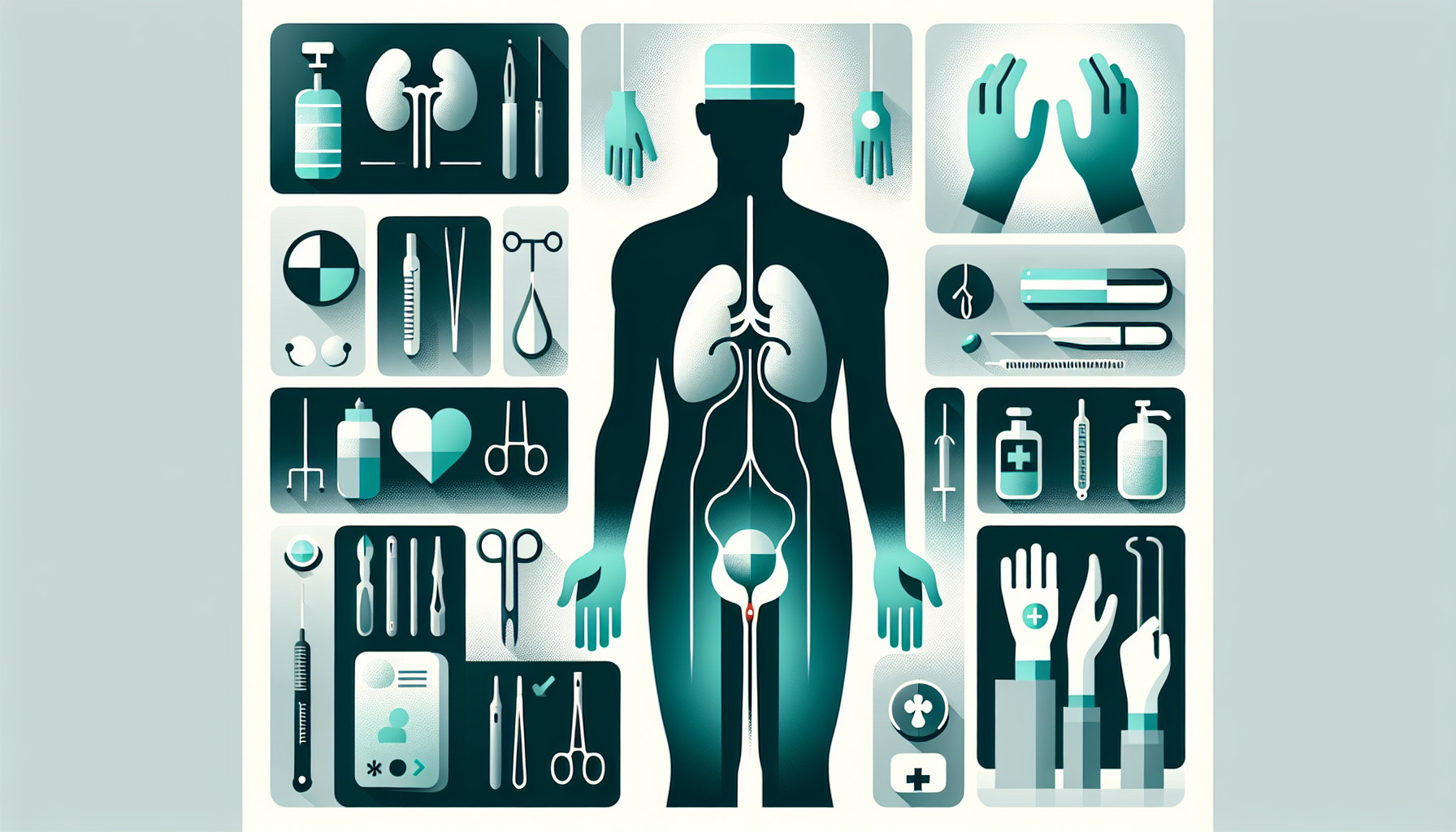Our Summary
This research paper looks at the use of a less invasive kidney surgery technique, known as minimally invasive partial nephrectomy (MIPN), in outpatient settings. The authors reviewed previous studies comparing MIPN performed in outpatient settings, where patients are discharged on the same day of surgery, and inpatient settings, where patients stay in the hospital for a longer period. They studied the differences in surgical outcomes, complications, readmissions, and satisfaction/costs between the two settings.
The results from 11 studies involving 20,548 patients, showed that there were no significant differences in total complication rates or readmission rates between the outpatient and inpatient groups. However, the outpatient group had fewer severe complications.
The authors conclude that outpatient MIPN is safe and possible for the right patients. However, they call for more research to determine the cost differences and patient satisfaction between outpatient and inpatient MIPN, and to identify which patients are most suitable for outpatient MIPN.
FAQs
- What is minimally invasive partial nephrectomy (MIPN)?
- Are there any significant differences in complications or readmission rates between outpatient and inpatient MIPN?
- What further research is needed regarding outpatient MIPN as per this study?
Doctor’s Tip
A helpful tip a doctor might tell a patient about nephrectomy is to closely follow post-operative care instructions to ensure a smooth recovery. This may include taking prescribed medications, avoiding heavy lifting or strenuous activities, and attending follow-up appointments with your healthcare provider. Proper rest and hydration are also important for healing after surgery. If you experience any concerning symptoms, such as excessive pain, fever, or difficulty urinating, be sure to contact your doctor immediately. It is important to communicate openly with your healthcare team throughout the recovery process.
Suitable For
Patients who are typically recommended for nephrectomy include those with:
Kidney cancer: Nephrectomy is often performed to remove cancerous tumors in the kidney. Patients with early-stage kidney cancer may undergo partial nephrectomy to remove the tumor while preserving as much healthy kidney tissue as possible.
Kidney stones: Nephrectomy may be recommended for patients with large kidney stones that cannot be treated with other methods, such as lithotripsy or ureteroscopy.
Kidney damage: Patients with severe kidney damage or chronic kidney disease may require nephrectomy to remove a non-functioning or poorly functioning kidney.
Polycystic kidney disease: Nephrectomy may be recommended for patients with polycystic kidney disease, a genetic disorder characterized by the growth of numerous cysts in the kidneys that can cause kidney failure.
Kidney trauma: Patients who have experienced severe kidney trauma, such as a penetrating injury or a blunt force trauma, may require nephrectomy to remove a damaged kidney.
It is important for patients to discuss their individual medical history and treatment options with their healthcare provider to determine if nephrectomy is the most appropriate treatment for their condition.
Timeline
Before Nephrectomy:
- Patient is diagnosed with a kidney condition that requires surgical intervention.
- Patient undergoes pre-operative evaluations, including blood tests, imaging studies, and consultations with the surgical team.
- Patient receives instructions on pre-operative preparations, such as fasting and medication adjustments.
- Patient undergoes the nephrectomy procedure, which may be performed through open surgery, laparoscopic surgery, or robotic-assisted surgery.
After Nephrectomy:
- Patient is monitored closely in the post-operative recovery area for any immediate complications.
- Patient is transferred to a hospital room for further observation and management of pain and discomfort.
- Patient receives post-operative care, including medications, wound care, and physical therapy.
- Patient is discharged from the hospital once stable and able to manage at home.
- Patient follows up with the surgical team for post-operative appointments and monitoring of recovery.
- Patient may undergo rehabilitation or physical therapy to regain strength and function.
- Patient resumes normal activities and adjusts to life with one kidney.
Overall, the patient’s journey before and after nephrectomy involves thorough evaluation, preparation, surgical intervention, post-operative care, and recovery. Close monitoring and follow-up are essential to ensure optimal outcomes and quality of life for the patient.
What to Ask Your Doctor
- What are the potential risks and complications associated with nephrectomy?
- How does minimally invasive partial nephrectomy (MIPN) differ from traditional nephrectomy?
- Am I a suitable candidate for outpatient MIPN, and why or why not?
- What is the recovery process like for outpatient MIPN compared to inpatient MIPN?
- What are the long-term outcomes and success rates of outpatient MIPN?
- What are the cost differences between outpatient and inpatient MIPN, and will my insurance cover the procedure?
- How experienced is the medical team in performing outpatient MIPN, and what is their success rate?
- Are there any alternative treatment options to nephrectomy that I should consider?
- How soon can I return to normal activities and work after undergoing outpatient MIPN?
- What follow-up care and monitoring will be necessary after the procedure?
Reference
Authors: Paynter A, Uy M, Millan B, Le Nguyen D, Bansal R, Shayegan B. Journal: J Endourol. 2024 Nov;38(11):1112-1120. doi: 10.1089/end.2024.0251. Epub 2024 Oct 3. PMID: 39276091
